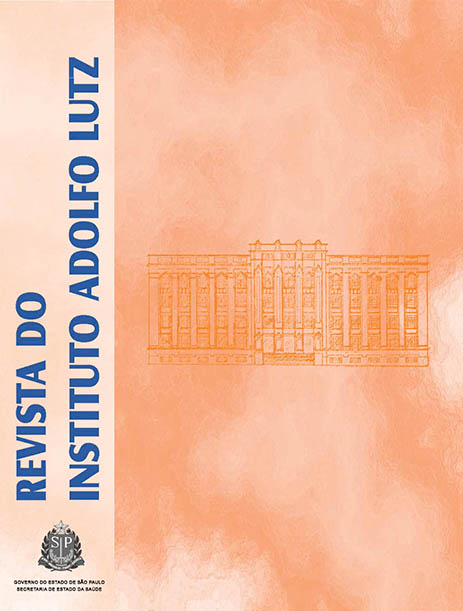Abstract
The present study aimed at evaluating the concordance between PCR and microbiological culture techniques for analysing organs samples from cattle with suspected lesions of tuberculosis. Fifty-two samples collected from slaughterhouses were analyzed by microbiological culture, and the extracted DNA was amplified by PCR using NZ1 and NZ2 primers. These primers identify the mycobacteria belonging to M. tuberculosis complex, and the primers pair pncA differentiate the M . bovis from M. tuberculosis species. The colonies isolated from 30 samples were suspended, and the extracted DNA was amplified by PCR using the same primer pairs. Although the agreement has been considered weak (k = 0.175) between microbiological culture and PCR performed directly in clinical samples using NZ1 and NZ2 primers, the two pairs of primers could amplify the target genes when 100% of the extracted DNA from 30 isolated colonies were used. Thus, PCR employing pncA primer pair enabled to identify M.bovis in the isolated colonies at a short time when compared with the biochemical assays. The concomitant use of PCR and bacteriologic culture techniques hastens the confirmation of detected agent, which is essential in conducting the epidemiological studies and in taking preventive control measures.References
1. Cousins DV, Bastida R, Cataldi A, Quse V, Redrobe S, Dow S, et al. Tuberculosis in seals caused by a novel member of the Mycobacterium tuberculosis complex: Mycobacterium pinnipedii sp.nov. Int J Syst Evol Microbiol. 2003;53:1305-14.
2. Corner LA. Post mortem diagnosis of Mycobacteirum bovisinfection in catlle. Vet Microbiol. 1994;40:53-63.
3. Anualpec. 2004. Anuário da Pecuária Brasileira. FNP Editors, p. 1-386. [Acesso em 2009 abr. 1]. Disponível em: [htpp://www.fnp.com.br].
4. BRASIL. Ministério da Agricultura, Pecuária e Abastecimento. Brasília. Programa Nacional de Controle e Erradicação de Brucelose e Tuberculose – PNCEBT. Manual Técnico. 2006:184.
5. Cedeño I, De Obaidía R, Sanjur O, Bayard V, Ortega-Barría E, Escobar C. Use of the polymerase chain reaction for diagnosing bovine tuberculosis in Panama. Rev Sci Tech. 2005;24(3):1067-75.
6. Niyaz Ahmed AS, Khan JR, Ganai NA. DNA amplification assay for rapid detection of bovine tubercle bacilli in semen. Anim Reprod Sci. 1999;57:15-21.
7. Shah DH, Verma R, Bakshi CS, Singh RK. A multiplex-PCR for the differentiation of Mycobacterium bovis and Mycobacterium tuberculosis. FEMS Microbiol Letter. 2002;214:39-43.
8. Kantor IN. Bacteriologia de la tuberculosis humana y animal. OPAS/OMS. 1979;11:63.
9. Bier O. Bacterologia e Imunologia. In: Micobatérias. São Paulo: Edições Melhoramentos; 1978. p. 585-610.
10. Wards BJ, Collins DM, Lisle GW. Detection of Mycobacterium bovis in tissues by polymerase chain reaction. Vet Microbiol. 1995;43:227-40.
11. Bermer-Melchior P. Drugeon HB. Inactivation of Mycobacterium tuberculosis for DNA typing analysis. J Clin Microbiol. 1999;37(7):2350-1.
12. Collins DM, Stephens DM. Identification of the insertion sequence, IS1081, in Mycobacterium bovis. FEMS Microbiol Letters. 1991;83:11-6.
13. De Los Monteros LEE, Galán JC, Gutiérrez SS, Marín JFG, Dominguez L, Rafael L, et al. Allele-specific PCR method based on pncA and oxyR for distinguishing Mycobacterium bovisfrom Mycobacterium tuberculosis: Intraspecific M. bovispncAsequence polymorfhism. J Clin Microbiol. 1998;36(1):239-42.
14. Thrusfield D. Diagnostic testing. In: Vet Epidemiol. London: The University Press; 1995. p. 266-85.
15. Araújo CP, Leite CQF, Prince KA, Jorge KSG, Osório ALAR. Mycobacterium bovis identification by molecular method from post-mortem inspected cattle obtained in abattoirs of Mato Grosso do Sul, Brazil. Mem Inst Oswaldo Cruz. 2005;100(7):749-52.
16. Nassar AFC, Miyashiro M, Oliveira CG, Pacheco WA, Ogata RA. Isolation and identification of bovine tuberculosis in a Brazilian herd (São Paulo). Mem Inst Oswaldo Cruz. 2006;102(5):639-42.
17. Brisson-Noël A, Aznar C, Chureau C, Nguyen S, Pierre C, Bartoli M, et al. Diagnosis of tuberculosis by DNA amplification in clinical practice evaluation. The Lancet. 1991;338:364-6.
18. Suffys P, Vanderborght PR, Santos PB, Correa LAP, Bravin Y, Kritski AL. Inhibition of the polymerase chain reaction by sputum samples from tuberculosis patients after processing using a silica-guanidiniumthiocyanate DNA isolation procedure. Mem Inst Oswaldo Cruz. 2001;96(8):1137-9.
19. Zanini MS, Moreira EC, Lopes MTP, Oliveira RS, Leão SC, Fiovaranti RL. Mycobacterium bovis: polymerase chain reaction identification in bovine lymphonode biopses and genotyping in isolates from Southeast Brazil by spoligotyping and restriction fragment length polymorphism. Mem Inst Oswaldo Cruz. 2001;96(1):2089-813.

This work is licensed under a Creative Commons Attribution 4.0 International License.
Copyright (c) 2012 Instituto Adolfo Lutz Journal
